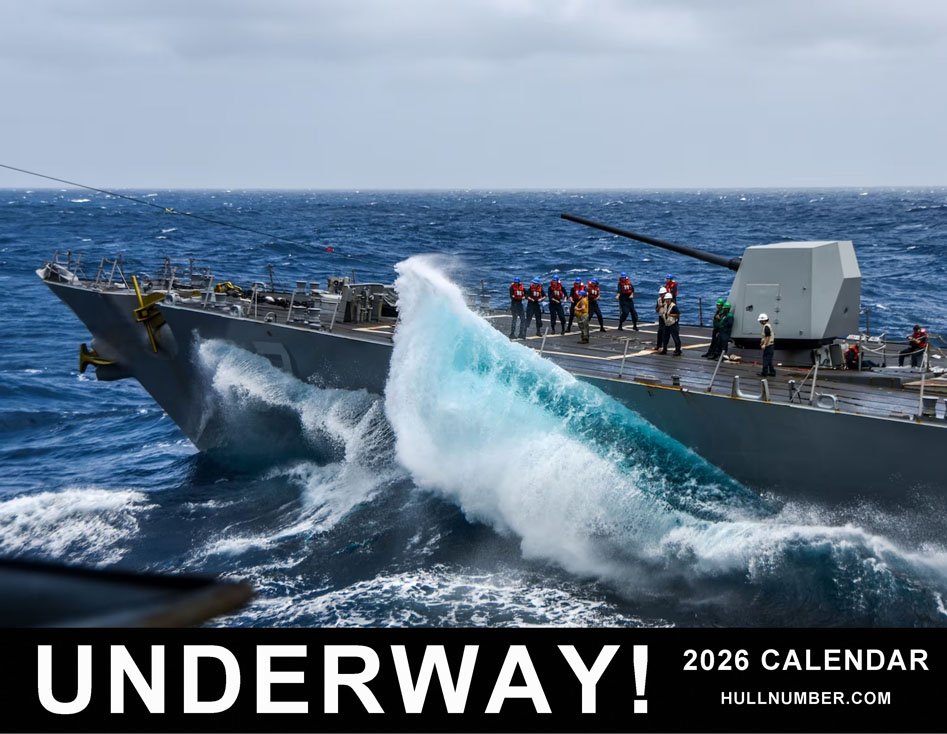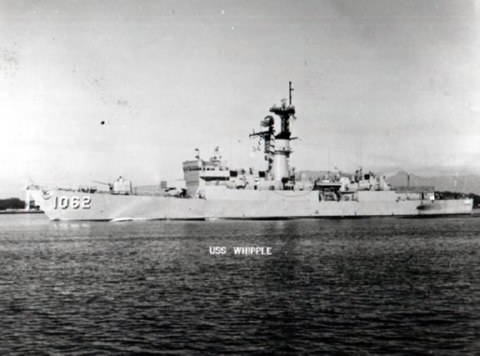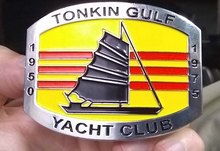 |
|||||||||||||||||||||||||||||||||||||||||||||||||||||||||||||||||||||||||||||||||||||||||||||||||||||||||||||
| TO RECEIVE A NOTIFICATION EMAIL AS SOON AS THE | |||||||||||||||||||||||||||||||||||||||||||||||||||||||||||||||||||||||||||||||||||||||||||||||||||||||||||||
| UNDERWAY! 2026 WALL CALENDAR IS SHIPPABLE - CLICK HERE |
|||||||||||||||||||||||||||||||||||||||||||||||||||||||||||||||||||||||||||||||||||||||||||||||||||||||||||||
 |
|||||||||||||||||||||||||||||||||||||||||||||||||||||||||||||||||||||||||||||||||||||||||||||||||||||||||||||
 |
|||||||||||||||||||||||||||||||||||||||||||||||||||||||||||||||||||||||||||||||||||||||||||||||||||||||||||||
| For RATING SHIRTS - Click on your Rating Abbreviation below: | |||||||||||||||||||||||||||||||||||||||||||||||||||||||||||||||||||||||||||||||||||||||||||||||||||||||||||||
|
|||||||||||||||||||||||||||||||||||||||||||||||||||||||||||||||||||||||||||||||||||||||||||||||||||||||||||||
| Click on your Rating abbreviation above: | |||||||||||||||||||||||||||||||||||||||||||||||||||||||||||||||||||||||||||||||||||||||||||||||||||||||||||||


U.S.S. WHIPPLE
(FF-1062)RESOURCES BEYOND CALCULATIONS
Click to view crew list
USS WHIPPLE (FF-1062) - a Knox-class frigate
In Commission 1970 to 1992FF-1062 Deployments - Major Events
| Add a FF-1062 Shellback Initiation | Add a FF-1062 Deployment - Major Event | ||||
| Month | Year | to | Month | Year | Deployment / Event |
|---|---|---|---|---|---|
| APR | 1967 | - | Keel Date: 24 APR 1967 at Todd Pacific Shipyards Seattle WA | ||
| APR | 1968 | - | Launch Date: 12 APR 1968 | ||
| AUG | 1970 | - | Commissioned: 22 AUG 1970 | ||
| JAN | 1972 | - | AUG | 1972 | West Pac-Viet Nam |
| JAN | 1972 | - | AUG | 1972 | West Pac-Viet Nam |
| MAY | 1973 | - | DEC | 1973 | West Pac-Viet Nam |
| OCT | 1974 | - | Shellback Initiation - 30 OCT 1974 - Pacific Ocean | ||
| OCT | 1974 | - | FEB | 1975 | West Pac |
| OCT | 1975 | - | AUG | 1976 | Dry Dock |
| JAN | 1977 | - | JUN | 1977 | Going up-river to Bangkok Thailand |
| JAN | 1977 | - | JUL | 1977 | West Pac |
| JAN | 1977 | - | JUL | 1977 | West Pac |
| JAN | 1978 | - | JAN | 1979 | West Pac |
| APR | 1978 | - | APR | 1978 | RIMPAC |
| JUN | 1978 | - | Shellback Initiation - 28 JUN 1978 - Pacific Ocean | ||
| JUN | 1978 | - | DEC | 1978 | Crossing International date line June 28 1978 |
| JUL | 1978 | - | Shellback Initiation - 3 JUL 1978 - Pacific Ocean | ||
| JUL | 1978 | - | DEC | 1978 | West Pac |
| AUG | 1978 | - | AUG | 1978 | At sea rescue of 400 Vietnamese refugees |
| OCT | 1980 | - | APR | 1981 | West Pac |
| JAN | 1981 | - | JAN | 1981 | Golden Shellback Intiation |
| APR | 1982 | - | OCT | 1982 | West Pac-Indian Ocean-Persian Gulf |
| MAY | 1982 | - | Shellback Initiation - 31 MAY 1982 - Pacific Ocean | ||
| NOV | 1982 | - | MAR | 1983 | West Pac-Indian Ocean-Persian Gulf |
| FEB | 1984 | - | Shellback Initiation - 20 FEB 1984 - Pacific Ocean | ||
| AUG | 1986 | - | Shellback Initiation - 26 AUG 1986 - Pacific Ocean | ||
| FEB | 1987 | - | JUL | 1987 | West Pac-Indian Ocean-Persian Gulf |
| SEP | 1987 | - | DEC | 1987 | West Pac |
| AUG | 1989 | - | SEP | 1989 | Pacex |
| JAN | 1991 | - | SEP | 1991 | Desert Storm |
| FEB | 1991 | - | AUG | 1991 | Desert Storm |
| FEB | 1992 | - | Decommissioned: 14 FEB 1992 | ||
FF-1062 General Specifications
Class: Knox-class frigate
Complement: 18 Officers and 267 Enlisted
Displacement: 3159 tons
Length: 438 feet
Beam: 46 feet 9 inches
Draft: 24 feet 9 in
Range: 4 500 nautical miles
Final Disposition: Sold to Mexico as ARM Mina (F-214) 10 April 2002
USS WHIPPLE (FF-1062)
The third Whipple (DE-1062) was laid down on 24 April 1967 at Seattle, Wash., by the Todd Shipyards Corp.; launched on 12 April 1968; sponsored by Mrs. Kirkland B. Alexander; and commissioned on 22 August 1970, Comdr. Jack Campbell in command.
Whipple
conducted sea
trials from 24 to 26 September before returning to the Puget Sound Navy Yard, Bremerton, Wash., for fitting-out
availability from 27 to 30 September. On 1 October, the escort ship proceeded to Nanoose, British Columbia, for a visit
prior to further trials at Carr Inlet,
Wash.
On 9
October, the ship got underway for San Diego and made port four days later. Whipple departed
the west coast on the
16th, bound for her new home port, Pearl Harbor, and duty with the Cruiser-Destroyer Force, Pacific Fleet. Soon after
her arrival on the 22d,
she commenced local operations in the Hawaiian area which lasted until 20 November when she tied
up alongside tender Bryce
Canyon (AD-36) for availability which ran until 4 December.
Five
days later, while engaged in local operations, the destroyer escort investigated an unidentified
submarine contact off
the Barking Sands Missile Test Range, Kauai. Following that hunt, Whipple resumed local cruising through 20
December.
Returning
to her home port the following day, the escort ship commenced a holiday upkeep period which lasted through 13 January 1971.
She then conducted weapons
trials off Hawaii before undergoing preshake-down tests.
On 8
February, Whipple commenced shakedown which included underway training
exercises and the ship's first battle problem. Termination of the shakedown period on 19 March was soon
followed by availability at the Pearl
Harbor Naval Shipyard. On 1 April-while undergoing
yard work which lasted into July-the escort
ship was assigned to newly formed Destroyer Squadron (DesRon) 33.
After sea trials in late
August, the ship commenced weapons trials.
From 4 to 10 October, the ship performed plane-guard duties for Constellation
(CVA-64), while additionally conducting
antiaircraft and surface gunnery
exercises. A dependents' cruise to Lahaina, a Navy Day "open house," and host-ship duties to Australian destroyer HMAS Hobart occupied Whipple
through 25 October, after which
time she conducted further trials and
gunnery shoots.
Whipple underwent upkeep for the first four days of November before she got underway on 5 November for the filming of the at-sea phase of an
"Hawaii Five-O" television episode. From 8 to 18 November, Whipple
participated in SEATO exercise RIMPAC-4, conducting
antisubmarine warfare exercises in company
with Australian, New Zealand, Canadian, Japanese, and American units.
Following
her return to Hawaiian waters, Whipple conducted further trials and
began preparations for a Western Pacific (WestPac) deployment. On 27 January 1972, Whipple departed
Pearl Harbor in company with the rest of DesRon 33 and proceeded via Midway and
Guam to the Philippines. The ship's
subsequent Manila stopover, where she made
port on 13 February, coincided with the initial work-up phase for SEATO exercise "Seahawk." Naval forces of Great
Britain, Australia, New Zealand, the
Philippines, and Thailand, as well as
the United States, participated in these exercises. Accordingly, Whipple, in company with Australian carrier HMAS Melbourne, took part
in the simulated convoy escort
operation.
Upon
detachment from "Seahawk," Whipple stopped at Subic Bay for maintenance
prior to proceeding to
the Gulf of Tonkin to relieve Higbee (DD-806) as Positive Identification and
Radar Advisory Zone (PIRAZ)
ship. After taking up station on 28 February, Whipple performed escort duties besides
conducting her
regular patrols. Her PIRAZ work during this time
was light, as reduced air activity over North Vietnam was accomplished by low visibility and a cancellation of many scheduled flights.
While Whipple
operated in company with Parsons (DDG-33)
on PIRAZ duties, the escort ship's electronic "eyes"
maintained the air "picture" for the northern half of the Gulf of Tonkin. The destroyer escort
next took up plane-guard duties for Hancock
(CVA-19) before providing gunfire
support in Military Region 1 for the
South Vietnamese Army's 3d Division. Whipple conducted 52
missions and expended 2,361 rounds of 5-inch
ammunition.
Night
harassment and interdiction fire against unobserved area targets comprised the
majority of the missions.
On some occasions, Whipple operated in conjunction with aerial spotters who directed the
destroyer escort's
fire on enemy troop movements, coastal defense guns, artillery sites, and tanks. During Whipple's
first gunfire support assignment on
11 April, the ship twice dueled enemy shore
guns, with enemy shells impacting within
150 and 200 yards of the ship. For this action, Whipple received the Combat Action Ribbon.
From 20
to 24 April, Whipple received repairs to her 5-inch gun from Hector (AR-7) and Mobile Technical Unit 13. Moored alongside the repair ship in
Danang harbor in the daytime, the ship would patrol off the harbor mouth in the evening. Upon
completion of gun repairs, the escort ship joined Tripoli (LPH-10)
for "Freedom Porch" strikes.
After a brief period
planeguarding on "Dixie" and "Yankee"
stations for Hancock, Whipple received a needed upkeep at Danang from 3
to 10 May while Piedmont (AD-17) replaced the escort's 5-inch gun. She then returned to "Yankee" Station where
she once more operated with Hancock,
conducting escort and plane-guarding
operations through June.
Following
availability at Subic Bay and a visit to Hong Kong, Whipple returned to the line and
provided gunfire
support in the vicinity of Point "Claudia" for the Republic of Vietnam's 1st and
3d Divisions. From 17
to 25 June, she fired harassment and interdiction missions at night and made runs
during daylight hours in
which she was aided by OV-1 Mohawks which pinpointed enemy bunker complexes, rocket sites, and supply routes.
On 26 June, Whipple moved
north to the vicinity of Point
"Allison" to provide gunfire support for Operation LAM SON 72. Coastal defense sites in the
Demilitarized Zone (DMZ) and point targets in the Cua Viet River region felt the sting of salvos she fired
in preparation for a South Vietnamese Marine Corps counter-offensive.
Continuing
to provide gunfire support for LAM SON 72,
Whipple received a call for help at dusk on 5 July. Vietnamese marines-under heavy attack by
tank-supported North Vietnamese Army infantry-radioed for immediate assistance. The escort ship-the
first ship in the vicinity to do
so-soon answered the call. Newport News (CA-148)
subsequently opened fire with her
8-inch guns to parry the North Vietnamese thrust.
Whipple
returned to planeguarding
duties from 9 to 17 July-this time for Saratoga
(CVA-60)-and continued combat
operations in the Gulf of Tonkin. Following this duty, the escort ship returned to Subic Bay on the 18th
for upkeep which lasted until 27 July, when the ship departed Philippine
waters, bound for Vietnam. En route, heavy
seas damaged the fiberglass 5-inch gun
shield, forcing a change of plans and a return to Subic Bay.
Following
in-port repairs, Whipple joined Task Group (TG) 77.6-based around America (CVA-66)-bound
for Yankee Station.
Upon relief by James E. Kyes (DD-787) as screen commander, Whipple put about
for the Philippines and joined her
squadron mates for the homeward-bound voyage
to Pearl Harbor. After stops en route
at Guam and Midway for fuel, the destroyer escort made port at Pearl Harbor on 25 August.
Underway
training, convoy and antisubmarine warfare exercises, and testing of the ship's
ASROC occupied Whipple
during October. November and December saw the ship undergo restricted availability at the Pearl Harbor Naval Shipyard.
Whipple conducted post-availability shakedown in January 1973
and commenced a period of routine training
and exercises which continued until 14 May when the destroyer escort departed Pearl Harbor for her second WestPac deployment. She proceeded to Japan and
arrived at Yokosuka on 24 May. Two days later, Whipple sailed for Taiwan
and arrived there on 30 May.
Availability alongside tender Prairie (AD-IB) preceded the escort ship's
deployment in Vietnamese waters, and she departed Taiwan on 5 June, bound for
"Yankee Station."
Deployed
as picket-escort from 8 to 30 June in the Gulf of Tonkin, Whipple returned to Subic Bay for repairs to her rudder. The
destroyer escort conducted sea trials before once more returning to "Yankee Station" as an escort for Coral
Sea (CVA-43).
Whipple visited Hong Kong from 1 to 8 August and screened Coral Sea back to Subic Bay before
returning to Tonkin Gulf for
picket-escort and PIRAZ duties. This line
deployment concluded on 6 September when the vessel departed for upkeep at Singapore.
Following her return to the
Philippines, the ship took part in Amphibious Exercise PEGASA II, off Mindoro. At its conclusion on 2 October, Whipple headed
toward "Yankee Station" for
another deployment as picket. During
that assignment, typhoons Nora and Opal swirled through the Tonkin Gulf giving Whipple plenty of
experience in storm evasion.
Following
a return to Subic Bay for upkeep, Whipple made a 21-day, round-trip voyage to Colombo, Sri Lanka, to "show the flag."
On the passage to Colombo, she carried several tons of bulk foodstuffs and miscellaneous supplies for the small
American community in
Sri Lanka. Once the escort ship arrived at Colombo, she served as central mailing point for Christmas packages from the Americans there to friends and
relatives in the United States and
elsewhere.
After
departing Sri Lanka on 31 October, Whipple proceeded to the Philippines and
arrived at Subic Bay on
8 November to prepare for a voyage home. She got underway on 20 November; made brief stops at Guam and Midway for refueling; and, in
company with her squadron
mates, steamed single-file into Pearl Harbor on 7 December. The destroyer escort spent the remainder of the year 1973 in a
leave and upkeep stand-down period.
Whipple
resumed local
operations out of Pearl Harbor and engaged in routine exercises, inspections, and maneuvers through
August. Early in September 1974, the ship commenced preparations for her third WestPac deployment and, on 1 October, got underway for Subic Bay.
Arriving
on the 16th, the destroyer escort conducted type training exercises in the Philippines from 23 to 26 October before
receiving orders to make for Ambon, Indonesia,
for a "showing-the-flag" and goodwill mission. On 27 October, the ship departed Subic and
headed south in the teeth of a
typhoon.
Upon making port at Ambon on
the morning of 1 November, Whipple began
carrying out the diplomacy of a
goodwill visit. Her crew distributed "Project-Handclasp" material,
painted a school, and topped off her
visit with an unusual and time-consuming refuelling operation-a three-day, round-the-clock affair- utilizing tanker
trucks. Underway again on 4 November, Whipple made for Subic Bay
once more.
After
arriving at the Philippine base on 8 November, the destroyer escort commenced restricted availability which lasted until the 16th when the ship sailed
for Kaohsiung, Taiwan.
Whipple
undertook ASW
operations out of Kaohsiung before proceeding via Subic Bay to Hong Kong. The escort ship arrived at the British Crown Colony on 2 December before once more heading for Philippine waters where she remained for the remainder of the
year 1974.
After
celebrating New Year's 1975 at Subic Bay, Whipple proceeded to Buckner Bay, Okinawa, for local operations which lasted through 10
January. Upon reaching
Philippine waters three days later, Whipple joined Task Group 77.5,
consisting of Coral Sea, Knox (DE-1052),
and Gridley (DLG-21), in local Philippine operating areas.
Detached
from TG 77.5 on 27 January, Whipple conducted ASW exercises with Reasoner (DE-1063) before rejoining Coral Sea and
planeguarding and steaming
in company with the carrier through 2 February. After one week in port, Whipple steamed out of
Subic Bay on 9
February, bound for Pearl Harbor.
Resuming local operations in
the Hawaiian area after her return on 22 February, Whipple conducted
routine exercises and maneuvers through the
summer of the year. On 1 July 1975, Whipple's
designation was changed to FF-1062
during a Navy-wide reclassifica-tion.
On August, Whipple entered Drydock No. 4 at the Pearl Harbor Naval Shipyard for a major
overhaul which was to include
reconfiguring her superstructure to
accommodate a LAMPS system.
Whipple
completed
overhaul on 24 March 1976. The ensuing months were spent in refresher training in the Hawaiian area where the ship
obtained certification over the full range of her weapons and propulsion systems. The period October to
December was spent in preparation
for a forthcoming deployment to the western Pacific.
On 3 January
1977, Whipple departed on her fourth deployment since commissioning.
From that date until her
return to Pearl Harbor, the frigate operated as a part of the 7th Fleet in various
advanced exercises. Following
post-deployment standdpwn, Whipple resumed training operations in the
Hawaiian area until December when she entered the Pearl Harbor Naval Shipyard for a restricted availability.
Completing
her repair work on 3 February 1978, Whipple resumed the pattern of operations out of her home port
which she had assumed following the previous deployment. On 3 April, the ship departed Hawaii for a four-nation naval exercise,
"RIMPACK '78," which took place in the Central Pacific. She returned on 22 April. Further exercises
followed as the ship prepared
for another extended deployment to the western Pacific. Whipple departed
Pearl Harbor on 24 June. During the period 5 to 10 July, Whipple made
the first visit to
Guadalcanal, Solomon Islands, by a United States
Navy ship since 1957. For most of the remainder of the year, the ship operated with the 7th Fleet throughout the
reaches of the western Pacific. Whipple returned to Pearl Harbor on 15 December having met all operational commitments during her deployment.
Whipple
received two
battle stars for service in Vietnam.
[Note: The above USS WHIPPLE (FF-1062) history may, or may not, contain text provided by crew members of the USS WHIPPLE (FF-1062), or by other non-crew members, and text from the Dictionary of American Naval Fighting Ships]
